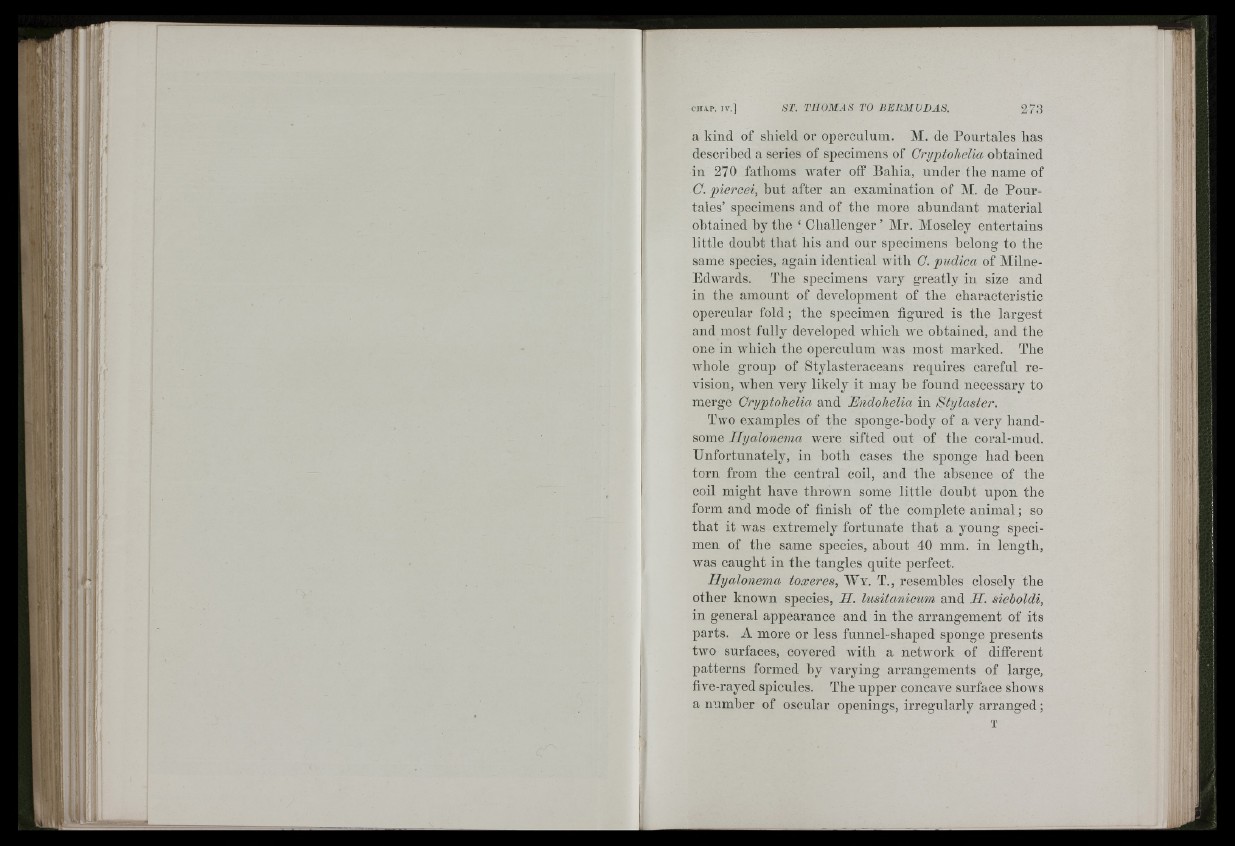
I
a kind of shield or operculum. M. de Pourtales has
described a series of specimens of Cryptohelia obtained
in 270 fathoms water off Bahia, under the name of
C. piercei, but after an examination of AI. de Pourtales’
specimens and of the more abundant material
ohtained hy the ‘ Challenger ’ Air. Aloseley entertains
little douht that his and our specimens belong to the
same species, again identical with C. pudica of Alilne-
Edwards. The specimens vary greatly iu size and
in the amount of development of the characteristic
o|)ercular fold ; the specimen figured is the largest
and most fully developed which we obtained, and the
one in which the operculum Avas most marked. The
Avhole group of Stylasteraceans requires careful revision,
vA'hen very likely it may he found necessary to
merge Cryptohelia and Midohelia in Stylaster.
Two examples of the sponge-hody of a very handsome
Hyalonema AA'ere sifted out of the coral-mud.
Unfortunately, in both cases the sponge had heen
torn from the central coil, and the absence of the
coil might have thrown some little douht upon the
form and mode of finish of the complete an imal; so
that it Avas extremely fortunate that a young specimen
of the same species, ahout 40 mm. in length,
Avas caught in the tangles quite perfect.
Hyalonema toxeres, W y . T., resembles closely the
other known species, H. Imitanicum and H. sieboldi,
in general appearauce and in the arrangement of its
parts. A more or less funnel-shaped sponge presents
two surfaces, covered with a network of different
patterns formed by varying arrangements of large,
five-rayed spicules. The upper concave surface shoAvs
a numher of oscular openings, irregularly arranged;
T
m l
1:11
¡V' I